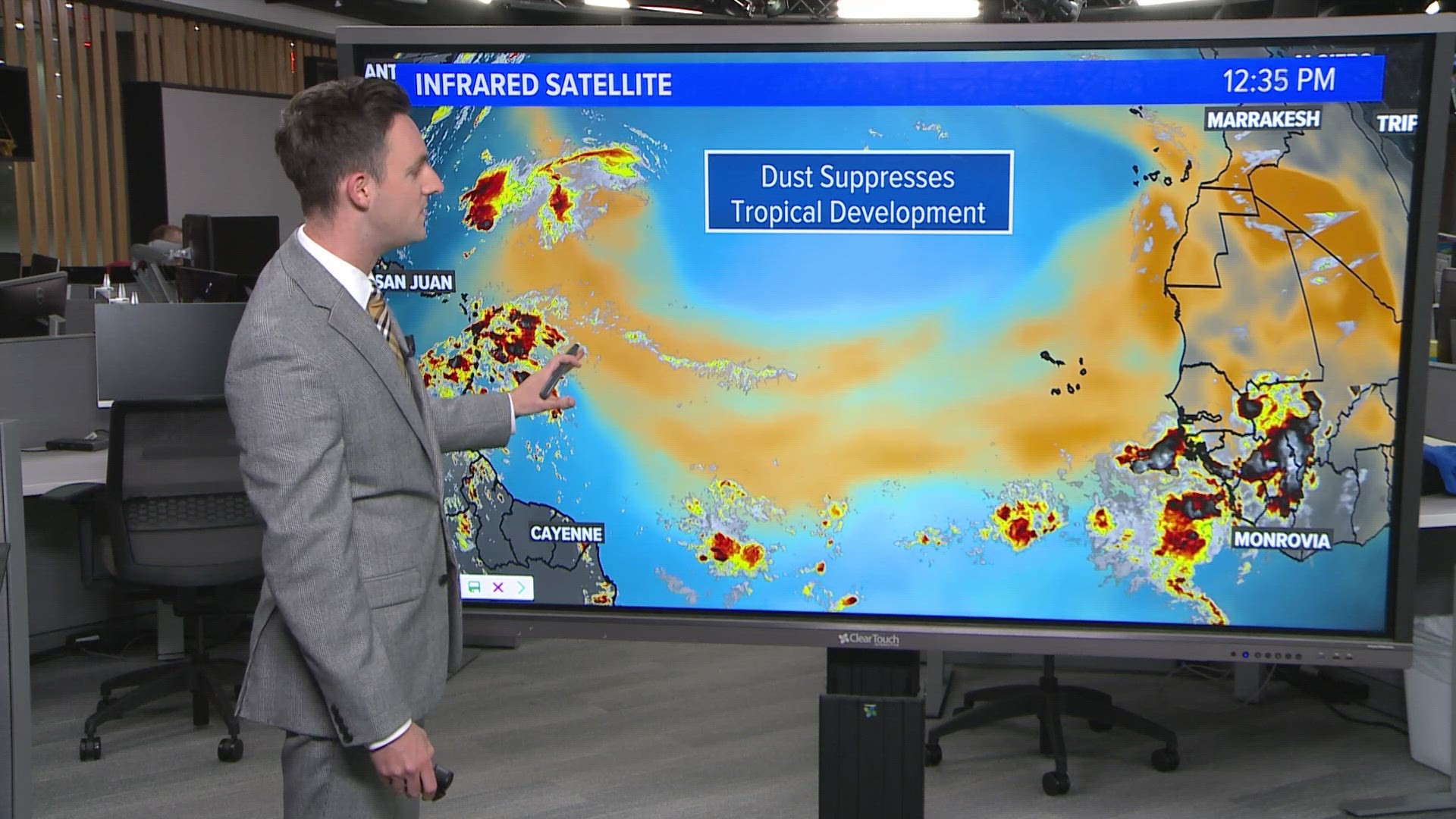The last few years have seen early starts to the Atlantic Hurricane season, with storms developing before the official start date of June 1st.
While that wasn't the case this year, June did become active for a brief period in a part of the world that almost never sees storms that time of year.
The Main Development Region (MDR) is a stretch of the Atlantic known for development during the mid and late-summer months. It's an area above the equator between Africa and the Caribbean.
The reason development here is unusual in June is because typically, Saharan Dust is moving off the Africa coast, keeping water temperatures cooler and the air too dry to sustain development. However, this year, Saharan Dust concentrations have been at the lowest levels seen in recent years, running well-below average.

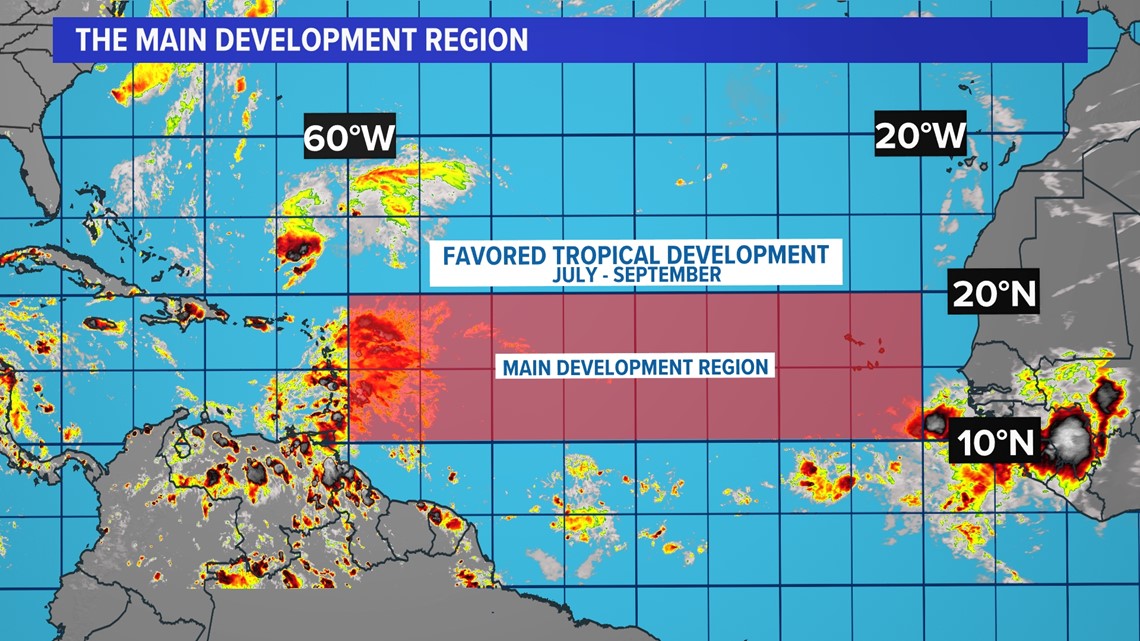
As a result, not one but two named storms were able to develop to the east of the Caribbean, Bret and Cindy. While neither storm turned into anything significant, it was the first time in recorded history that two named systems had developed in that part of the world in the month of June.

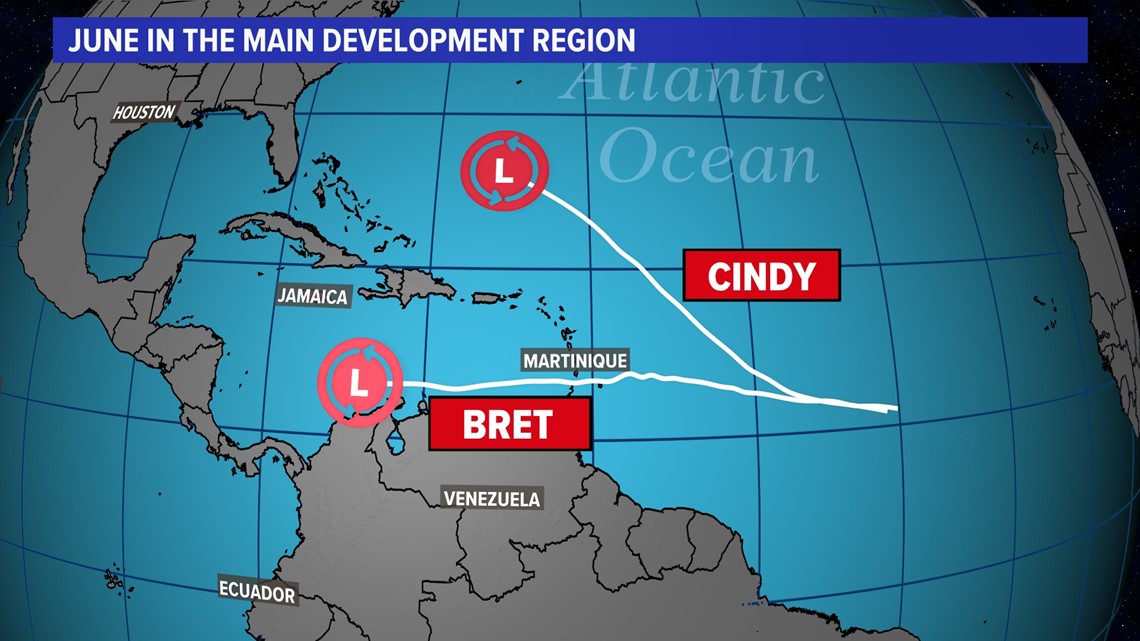
Saharan Dust is now finally starting to move over the open waters of the Atlantic, leading to a noticeable drop in activity. While this is only part of the equation explaining why conditions are turning quieter, it is going to be a big player into the start of July, which is common for this time of year.

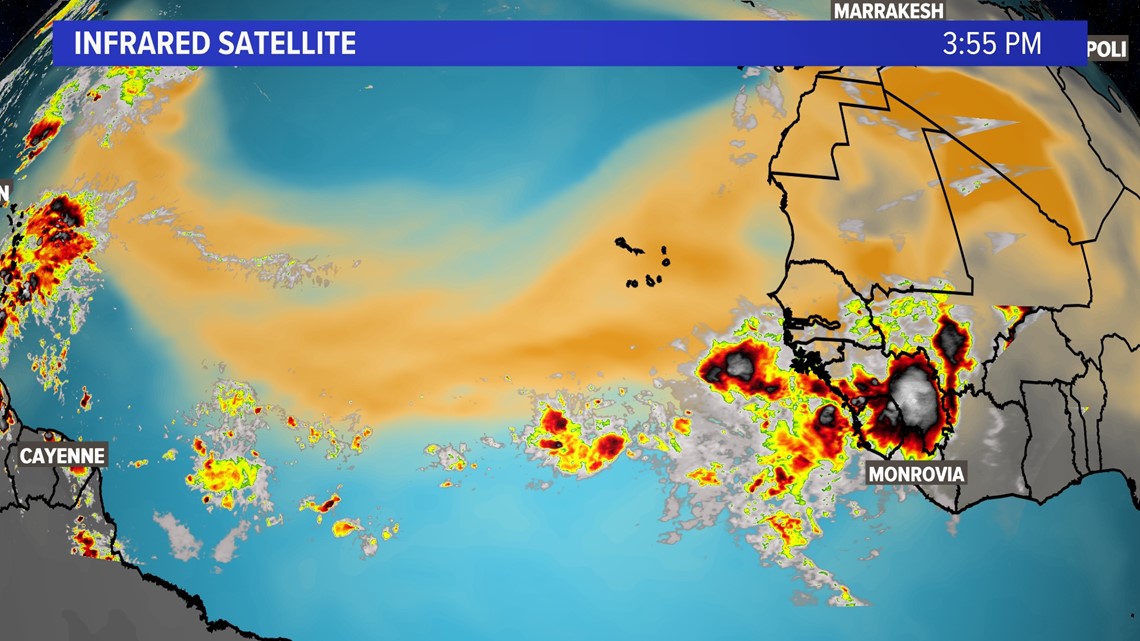
What Is Saharan Dust?
The name is as it suggests - Saharan dust is dust that originates from the Sahara Desert in North Africa. But where does it come from?

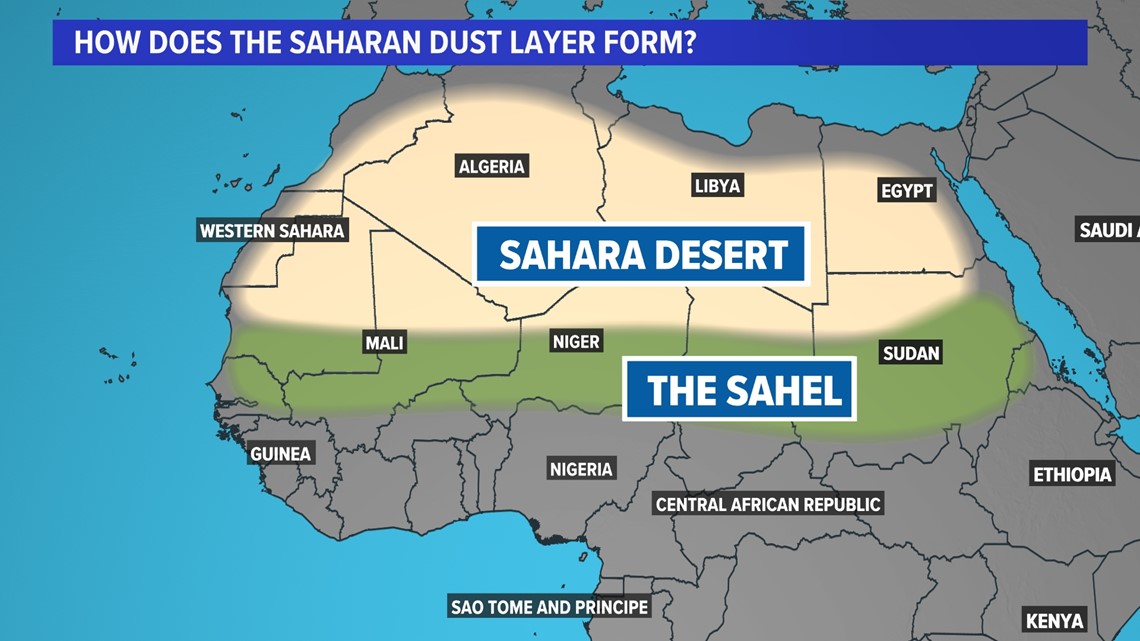
Thunderstorm development in the Sahel, a semi-arid region to the south, leads to large dust storms when these storms fall apart. Outflow from these storms kick up dust and sand from the desert which gets lofted into the air and carried on trade winds across the Atlantic.

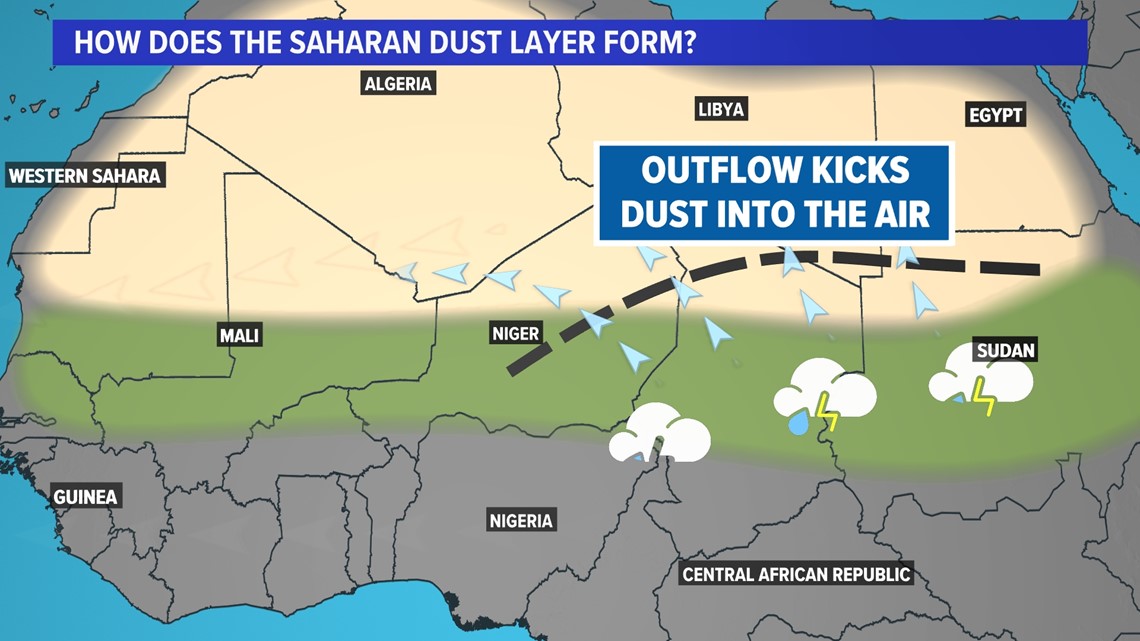
As the dust moves across the Atlantic, it blocks out sunlight when the concentration is high enough, leading to a drop in water temperatures. Additionally, the dry and dusty air lowers the humidity over the water, stunting cloud growth and preventing storms from becoming organized.

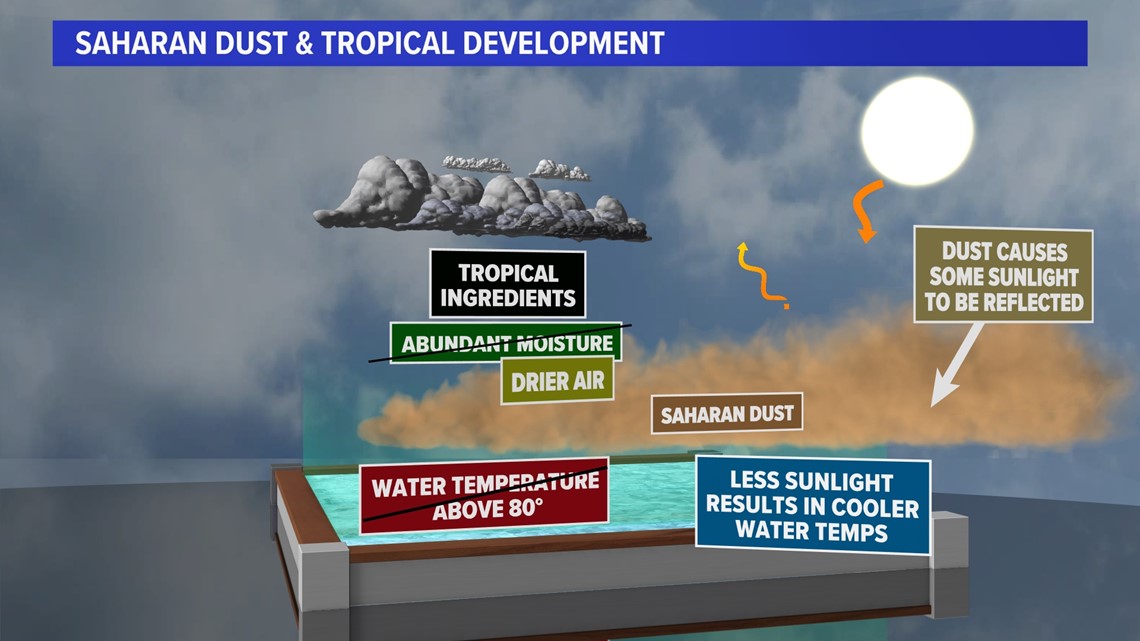
In addition to stunting tropical development, Saharan dust also carries nutrients that feed wildlife in the oceans, promoting a healthy ecosystem. Occasionally, dust can also make it over the Americas, leading to hazy skies and rarely poorer air quality.

